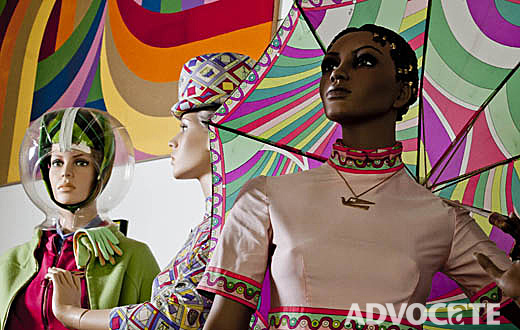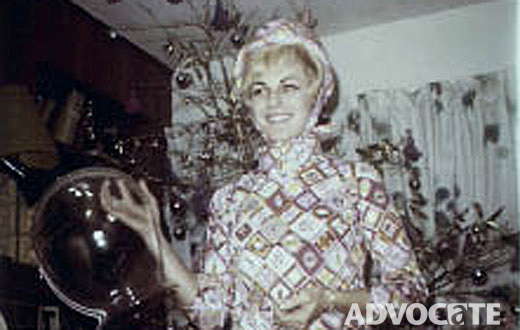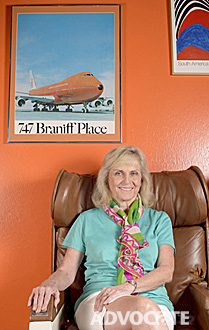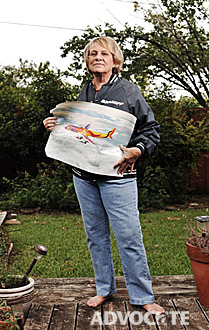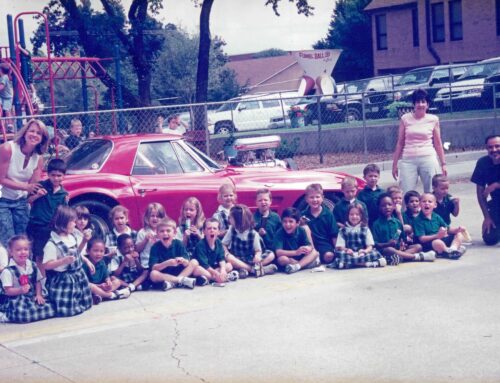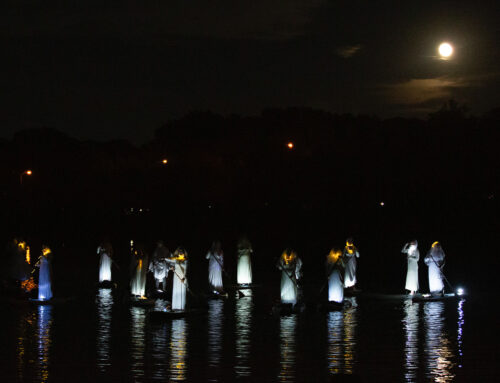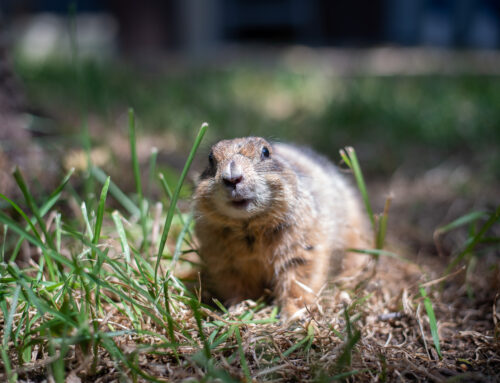Remembering a unique era in air travel, when it was all glitz, glamour and questionable practices
Flying in the 1950s and ’60s was all luxury, style and class. Pilots greeted pristinely dressed passengers as they boarded. Beautiful hostesses donned fashion-forward mini dresses and high-heeled boots, served up cocktails and chef-prepared lunches, and when one of them delivered the seat belt instructions, people actually listened.
Back then, women in their late teens and 20s clamored for a flight attendant job, typically available to about one in a hundred applicants. Many of the successful ones still live in Dallas because it was the headquarters of Braniff, American and, later, Southwest.
Miki Snell
In 1965, Dallas-based Braniff hired White Rock area resident Miki Snell on the spot — she says she thinks they were trying to fill a class and her timing was right.
At the time, airlines looked for girls to fit a certain mold, she says.
Snell and her contemporaries were not called flight attendants, as they are under today’s gender-neutral standards, but “hostesses.” On other airlines, they often were “stewardesses.” In height, they were 5 feet 2 inches to 5 feet 7 inches, and they weighed no more than 135 pounds. Married girls needed not apply. Each woman teased her hair into a puffy do, wore Valentine-red lipstick and nail polish, and squeezed into a girdle that fit so tight that, “by the end of the day, you had a mesh pattern on your flesh,” she says.
Though sex appeal was essential, preparation for the flight crew was intense. Before taking off, Snell attended a five-week training school at what is now the maintenance center at Love Field.
“We had to learn about the planes, their configurations and food service, but the biggest thing was emergency training — learning about the equipment on the aircraft and what to do in medical emergencies. It was pretty comprehensive.”
Braniff hostesses wore conservative suit dresses until the mid-’60s when Italian designer, Emilio Pucci, came along and transformed the attire into fashion-forward mini dresses and high-heeled boots. The high-fashion atmosphere, while it could be uncomfortable, was simultaneously cool, Snell says.
“It was all chic, trendy and fun. We got a new uniform every couple of years and even the planes were painted bright like jelly beans.”
Even during the most dazzling era, air travel wasn’t entirely glamorous.
Snell says she once spent 10 hours in an airport ladies room, so she could take off her heels, while waiting for her assigned flight. She also was onboard during a bomb scare, after which she and her crew underwent questioning by the FBI. While country music stars on flights to Nashville were friendly, she had to deal with folks from Washington, D.C. who were “rude, arrogant and generally nasty.”
Sandi Jefferson
Sandi Jefferson lives near White Rock Lake and also worked for Braniff. She says she could kick herself for getting rid of her old uniforms.
Jefferson started in 1966, when she was 19 years old, in reservations.
“I was the baby of the office,” she remembers.
She always wanted to go into the travel business because her family traveled a lot and was into airplanes. As a kid growing up in Chicago, she remembers her mom and dad taking the whole family to Midway Airport to watch planes take off and land, just for fun.
“I knew I could get to go places I wouldn’t otherwise be able to go,” she says of her travel career.
Back in the days before security checks, she and her friends would use Braniff passes to fly to New Orleans or New York City for just one day.
“We’d say, ‘Wanna go to New York today?’ ” she says. “And we’d just go and take the last flight back. You could do that then.”
Jefferson says Braniff was maybe the last airline to catch onto technology. When she started, there were no computers in the reservation centers. They wrote reservations down by hand on cards and then put them on a conveyor system. Airports called in with flight delays, and the reservationists would hang numbers on the wall to show which flights were on time or delayed. Occasionally, in those days, guys would call in from bars to find flight-delay information. They were betting on which flights would be delayed.
But those weren’t the weirdest calls Jefferson fielded. There were some straight-up obscene callers, as well as some creeps who gave the girls a laugh.
She recalls one guy who always asked, “Are you wearing nylons?” Nylons were part of the uniform, and the reservationists always knew what was coming next, she says.
The caller always asked, “Could you take off your shoes and rub your feet together?”
Jefferson thinks travel is safer nowadays. Airlines take fewer risks.
“They used to just fly right through thunderstorms,” she says, recalling a harrowing flight from New York when she thought the plane would crash.
Jefferson and her husband, Colin, still like to travel, but airline travel is more difficult and much more of an ordeal than it once was, she says. Travelers are nickeled and dimed with fees. Getting through security is stressful and time-consuming. And flights almost always are packed with passengers.
But Jefferson is still in the travel business. She has worked as an in-house travel agent for Mary Kay for more than 20 years.
Bonnie Martin
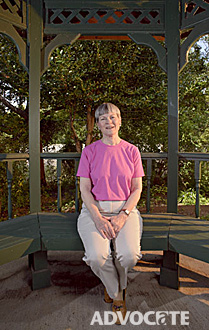
Bonnie Martin became an airline stewardess after taking a trip to the World’s Fair in Seattle in 1962.
Bonnie Martin started working for Eastern Airlines in 1965, when she was 25. Eastern was a little more conservative than Braniff or Southwest, which outfitted stewardesses in hotpants.
Martin’s uniform was a navy blue suit of lightweight wool, worn with a white blouse. Until they boarded the plane, Eastern flight attendants also wore hats and gloves.
“It was very different than today,” she says. “There was no security. People could come right up to the airplane, and families could come right up to the gate. People dressed up when they took a flight.”
The C.C. Young resident decided to go into the travel business after taking a trip to Seattle for the World’s Fair.
“The job was really a lot of fun,” she says.
The Abilene native was based first in Miami, then in Chicago and Atlanta. She flew all over the United States, plus Canada, Mexico and the Caribbean. She traveled on vacations to Hawaii, Europe and the Bahamas. And she was able to fly to San Antonio to visit friends and family as often as she liked.
Eastern Airlines went out of business in 1991. At the time, Martin’s daughter was in high school.
“I would’ve had to start over on reserve and be on call, and that would not have worked very well,” she says.
So she decided to stay home, and she never went back to work.
Martin moved to our neighborhood in June to be near her daughter and granddaughter, who also live in the neighborhood.
Visit the Frontiers of Flight Museum at 6911 Lemmon.
Hours are Mon.-Sat. 10 a.m.-5 p.m.,
Sun. 1 p.m.-5 p.m.
seniors $6, adults $8, students $5, under 3 free
For more information call 214.350.3600 or visit flightmuseum.com

